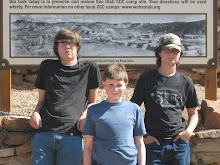Diet
Utahraptor’s diet wasn’t very complicated. They would hunt anything that was available to them. When it comes to water, Utahraptor probably didn't need to drink a whole lot, since it probably got most of its water from the blood of its prey. However, due to the fact it mostly lived in a semi-arid climate, it probably still had to drink fresh water. It is possible that Utahraptor scavenged when it couldn’t find anything else to eat. Since it was one of the largest carnivores of the early Cretaceous, it could probably scare most other predators away from a carcass that it wanted to feed on. But scavenged meat was a last resort for Utahraptor, because this large dromaeosaur was designed for speed and agility, although it was more of an ambush predator, rather than a head-on battler.
Speed and agility
Utahraptor was agile, and could probably outrun most other dinosaurs during its time. However, it was more of a heavyweight fighter, rather than a more agile Velociraptor, which relied on its ferocity and dexterity, rather than its size. Utahraptor was the fastest carnivore in the early Cretaceous, although it could only run fast in short, quick bursts of speed. At top speed, Utahraptor could probably run up to 20 miles per hour for about 5-10 seconds. It wasn’t any faster because of its size. (However, the typical dromaeosaur [3 ft. tall, 6 ft. long] could reach speeds up to 25-30 miles per hour.) Dromaeosaurs could run so fast because a.) Their legs were very strong and b.) because of their lung design. First, the raptor would, obviously, inhale air. Then, that air would travel to various bones and vertebrae as well as the lungs. Finally, the remaining air exited the body through holes in various bones and escaped through the animal's pores in its skin. This method conserved energy because the raptor didn't have to let as much air out of its lungs.
Wednesday, May 12, 2010
Subscribe to:
Posts (Atom)
